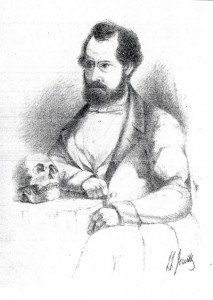
Thomas Bateman, pioneer archaeologist
Whilst reading Mary’s letters held in the Sheffield Archive I came across a couple of references to a Thomas Bateman. In a letter dated Jan 14th 1944, Mary writes about a revolving circular table (that she wants to donate to the Guild of St George) “…which belonged to my grandfather T. Bateman the antiquarian whose collection of antiques I believe is at Sheffield“. In another letter there is a further reference to a Thomas Bateman of Middleton Hall, Youlgreave, who this time Mary say’s was her great uncle.
I was alerted by this on two counts. Firstly, there are some objects in the Bygones with a label adhered to them saying Bateman Collection. And secondly we have already identified the Rebekah Bateman of the passport (another item in the Bygones) as being Mary’s sister. I just had to find out who Thomas Bateman was and whether there was any possible connection! AND I think there is!!
A quick search took me to a site about Thomas Bateman – Pioneer Archaeologist (do read it, it’s fascinating!)
A “..nationally famous controversial pioneer archaeologist and Squire of Middleton Hall“. Apparently Thomas Bateman was regarded as a “scholar and a scoundrel” in Victorian times for his groundbreaking work in the field of archaeology in Derbyshire in the mid 1800’s.
Although his methods were crude he is responsible for some significant archaeological discoveries and his two published volumes of notes and records were instrumental in the development of modern methods of recording archeaological finds.
But how was he related to Mary? This is where it gets a bit tricky as there were THREE Thomas Batemans’, all part of the same illustrious family, so it’s a question of establishing which one! I have tried to draw a map of the link as it is too longwinded to explain in writing.
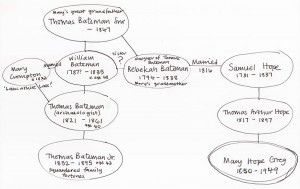
Mary's connection to the Bateman Family
The connection to Mary is (I think) quite simple. Taking another look at the Hope family tree, and cross-referencing this with other records confirms that Samuel Hope (Mary’s grandfather) married a Rebekah Bateman from Middleton Hall, Derbyshire in 1816. This makes her Mary’s grandmother (and the namesake of the Rebekah Bateman in the passport!). Taking her birth date and date of death into account I am surmising that she is the daughter of Thomas Bateman Sr (potentially making this Thomas Mary’s great grandfather). His son William is the father of Thomas Bateman the archaeologist (but what relation would he be to Mary? -we really need a genealogist on the project!).
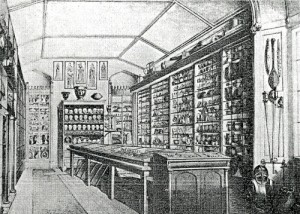
The Thomas Bateman Museum
As well as being a pioneering archaeologist Thomas Bateman amassed a collection of artefacts at his home at Lomberdale Hall which grew so vast the Hall was extended to accommodate it and it became a museum of antiquities.
Why is any of this relevant to our research? Well, it could explain the origin of some of the objects in the Bygones collection and how they came into Mary’s hands, as the third Thomas Bateman (the archaeologists son) squandered away the family’s fortune in the late 1800’s and was forced to sell the family estate and the entire collection to pay off his debts. Did she acquire these objects then?. It also establishes a passion for collecting in Mary’s side of the family (and a maverick streak!). Who knows, perhaps she even visited the Bateman collection in her formative years! Perhaps her acquisition of objects from her family’s collection drove her to build her own.
And one final note. William Bateman moved to Derbyshire from Manchester in 1820 at the age of 32 having just married “… Mary Crompton, a Lancashire lass“. Is it too much to hope that she was somehow related to Samuel Crompton?!….. Sharon

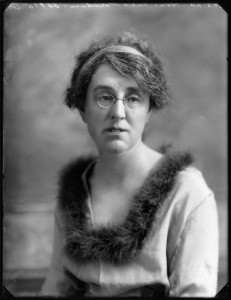
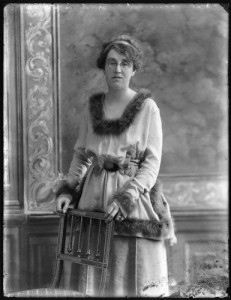



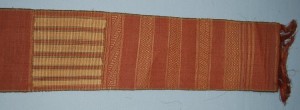
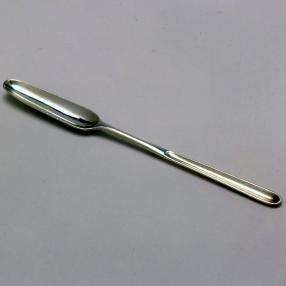
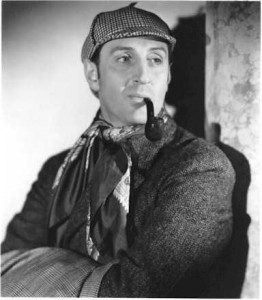
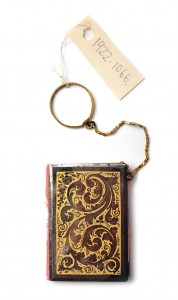
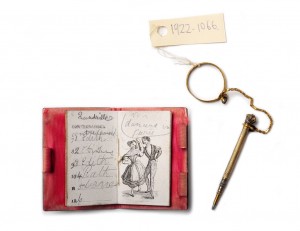
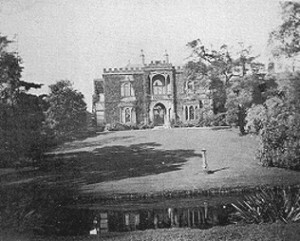


Comments